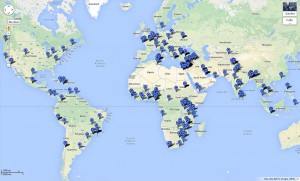The banalisation of tear gas
I am not the only person who is concerned by the banalisation of tear gas as a riot control agent. Over the past few years, the intensity with which such agents have been used has increased markedly, to the point that whole sections of cities now routinely become saturated with the toxic chemicals. In particular Michael Crowley of Bradford University’s Non-Lethal Weapons Project has published studies on the fast technological development and growing global markets of riot control agents and their delivery systems: one in collaboration with the Omega Research Foundation, and one, co-authored with Dana Perkins, then expert of the 1540 Committee, for the Biochemical Security 2030 Project, University of Bath. Likewise, the Physicians for Human Rights issued a report in 2012 on the Bahrain government’s indiscriminate use of tear gas, and in 2013 another one on tear gas excesses in Turkey.
The recent massive use of tear gas by a highly militarised local police force to quell riots in Ferguson, Missouri, has drawn renewed attention to a weapon that the Chemical Weapons Convention bans as a tool of warfare.
Anna Feigenbaum has just published a historical overview of tear gas in The Atlantic, starting with the fist use of a chemical weapon by the French in World War 1 exactly 100 years ago this month.
Perhaps most striking is her compilation and mapping of global tear gas use during 2013 (my screenshot):
A PDF printout of the incidents she has listed runs for 19 pages.
Alas, if a riot control agent is used as a tool for law enforcement or domestic riot control purposes, then the Chemical Weapons Convention does not consider it as a chemical weapon and therefore falls outside its scope of application.

